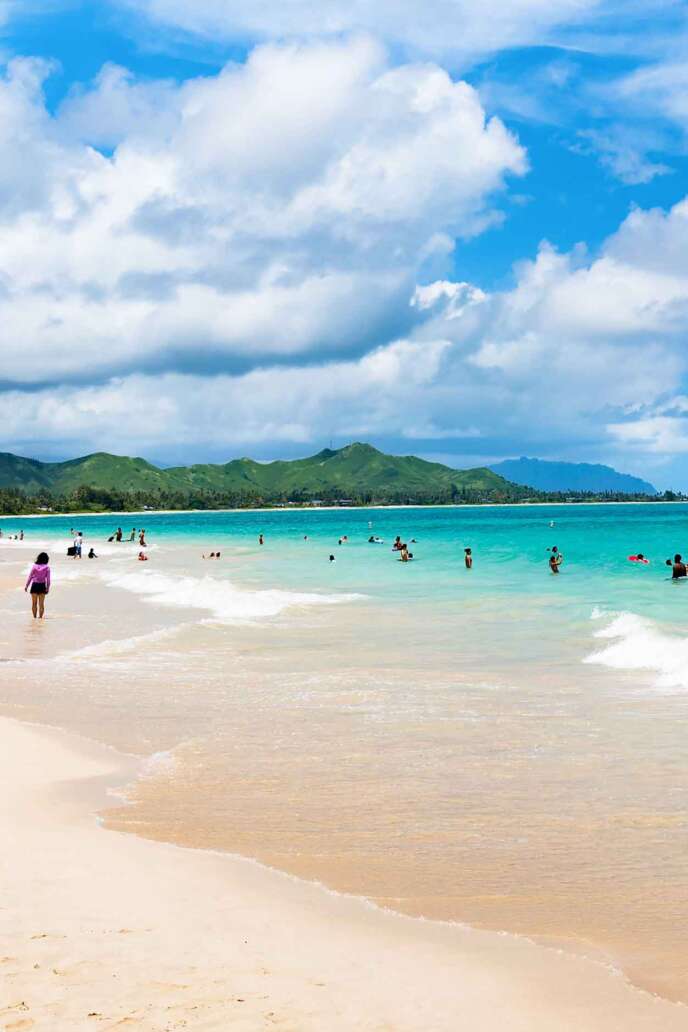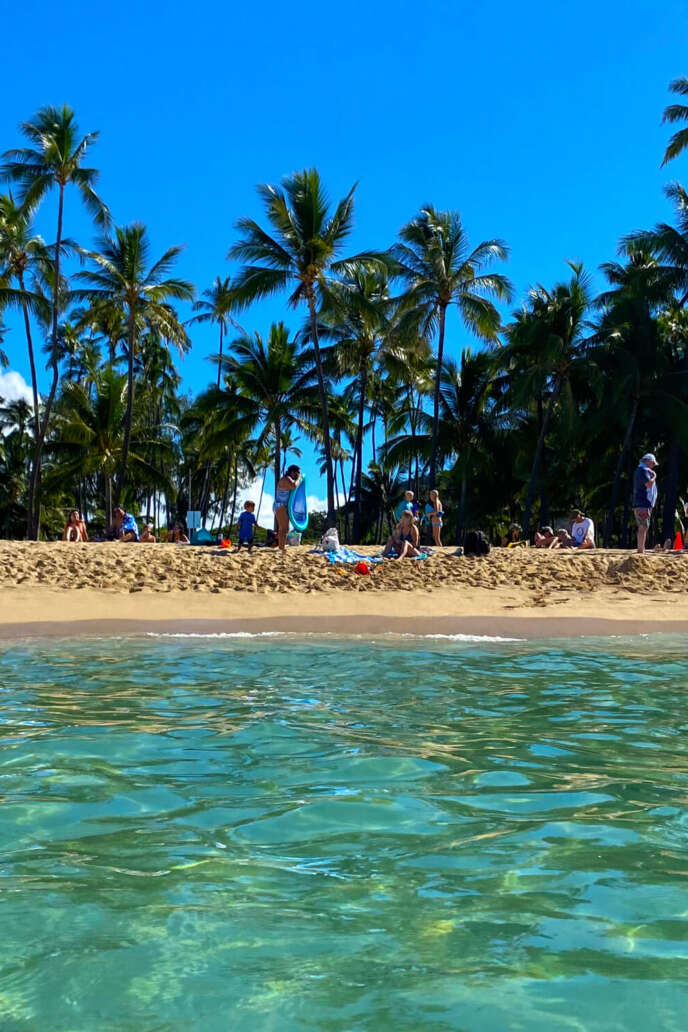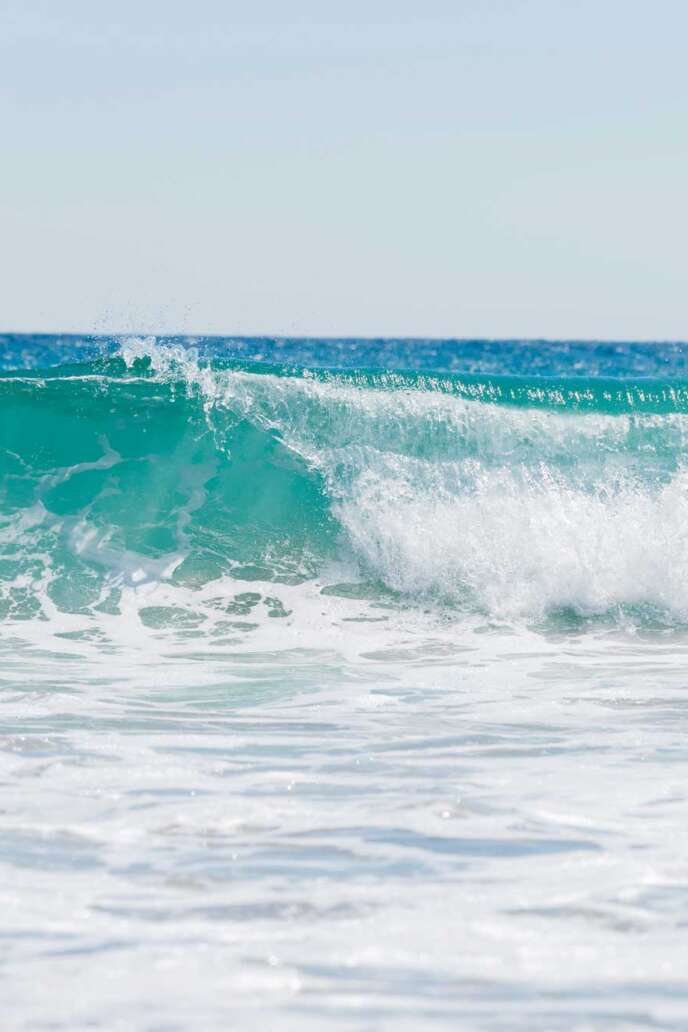Mahana Beach, also known as Papakōlea Beach, is one of only four green sand beaches in the world. Formed from olivine crystals that originate from the surrounding volcanic activity, this rare and enchanting beach offers a unique allure that draws visitors from around the globe. This guide aims to unveil the wonders of Mahana Beach, guiding travelers through its captivating landscapes, and highlighting why this hidden gem is a must-visit destination on the map of world travel.
Highlights
- Mahana Beach involves a bit of an adventure. It’s accessible via a rugged hike or a 4WD vehicle, ensuring a more secluded and exclusive experience away from crowded tourist spots.
- The contrast between the green sands and the azure waters makes for breathtaking and unique photo opportunities.
- The trail offers stunning vistas of the rugged coastline and the Pacific Ocean, making it a perfect activity for nature lovers and hiking enthusiasts.
- While the surf can be strong, there are areas of the beach suitable for swimming. Sunbathing here means you’ll be lounging on some of the rarest sand on the planet, offering a unique twist to a beach day.
History
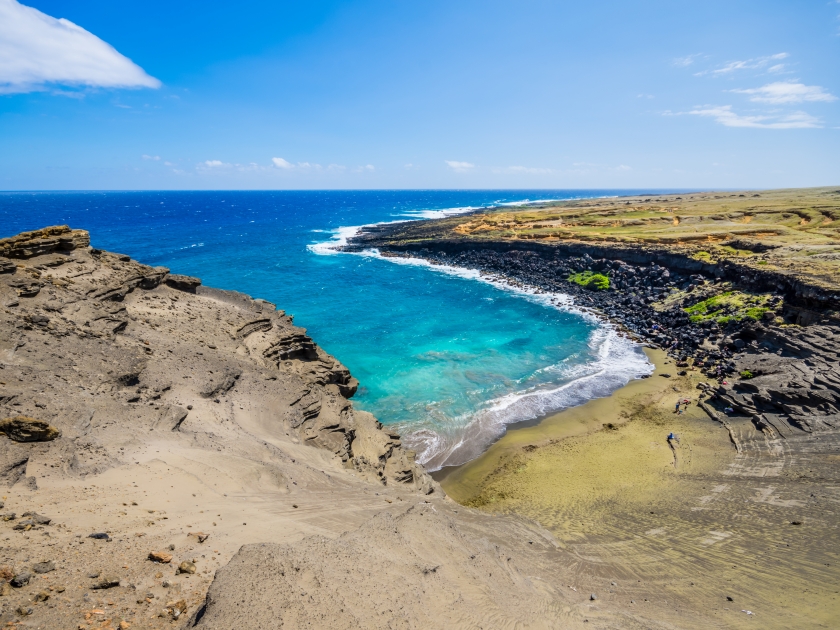
Volcanic Origins: A Natural Wonder Formed Over Millennia
Mahana Beach, often referred to as Papakōlea Beach, owes its distinctive green sand to the volcanic cinder cone Pu’u Mahana, which erupted approximately 49,000 years ago. This natural phenomenon resulted from the erosion of olivine crystals, a byproduct of volcanic activity, that was gradually worn down by the ocean’s forces. The erosion process gave rise to the stunning green sand beaches that visitors marvel at today.
Ancient Civilization: Traces of Hawaiian Heritage
Long before it became a destination for adventurous travelers, the area surrounding Mahana Beach was bustling with ancient Hawaiian life. Archaeological discoveries have unveiled the remnants of a once-thriving village, complete with burial caves, temples, and residential structures. This village’s existence was notably recorded by Captain James Cook in 1779, highlighting its significance in Hawaiian culture and history.
Preserving Remote Beauty: Mahana Beach Today
In the present day, Mahana Beach remains a hidden gem, cherished for its isolation and the effort required to reach its shores. This remoteness has played a crucial role in conserving the beach’s natural splendor and its unique green sands, offering a serene and untouched paradise for those willing to embark on the journey. The combination of its volcanic origins, historical significance, and preserved beauty makes Mahana Beach not just a place to visit, but an experience that connects travelers with the awe-inspiring forces of nature and the rich tapestry of Hawaiian history.
Things to Do
Swimming in Emerald Waters
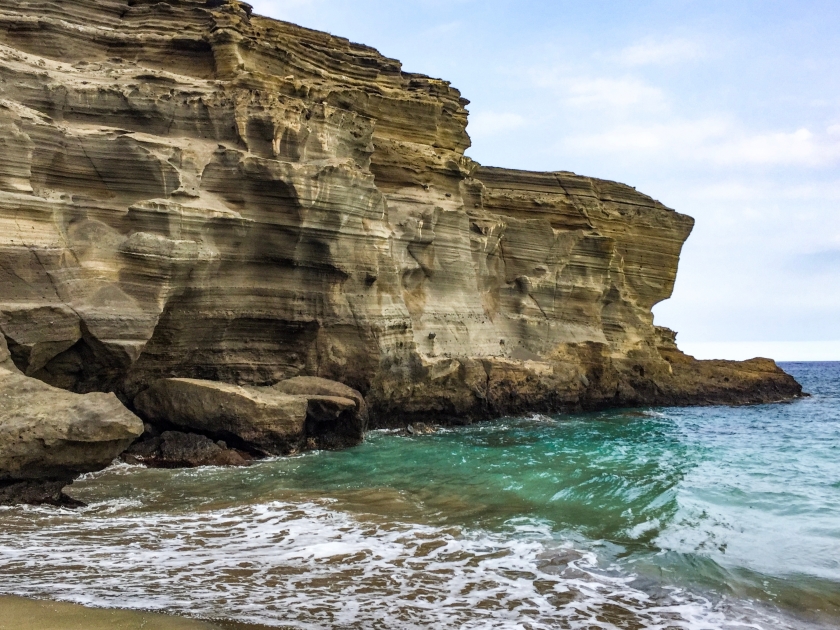
The clear, emerald waters of Mahana Beach are perfect for swimming, offering a refreshing escape under the Hawaiian sun. The gentle waves cater to swimmers of all levels, providing a safe and exhilarating experience. Surrounding the beach, the olivine-rich sand creates a stunning backdrop for a day spent in the water, making it an unforgettable part of any visit.
Hiking to Historical Sites
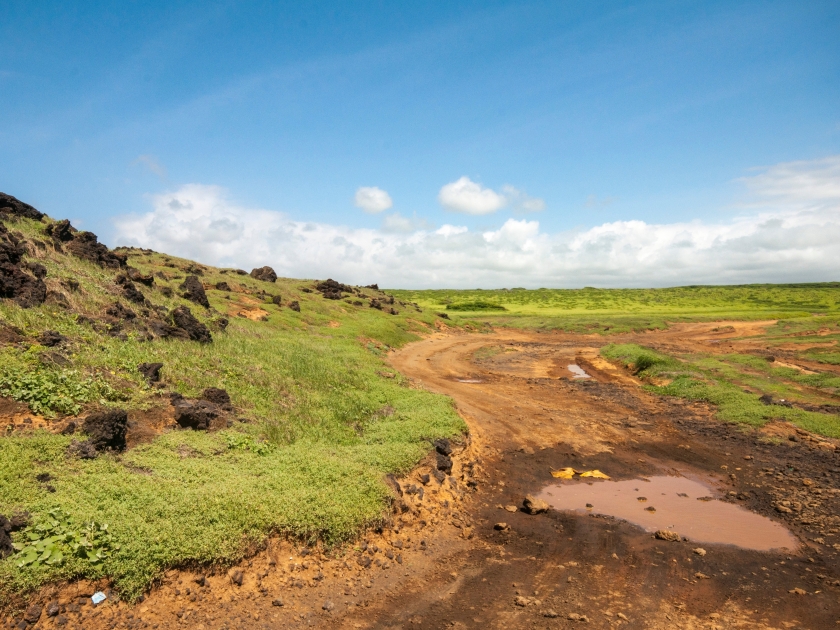
For the adventurous at heart, hiking trails near Mahana Beach reveal breathtaking views and lead to ancient historical sites. These paths wind through lush landscapes and volcanic terrain, offering glimpses of Hawaii’s rich cultural heritage. Hikers can discover petroglyphs carved into rock faces and remnants of old fishing villages, connecting with the island’s past.
Picnicking with a View
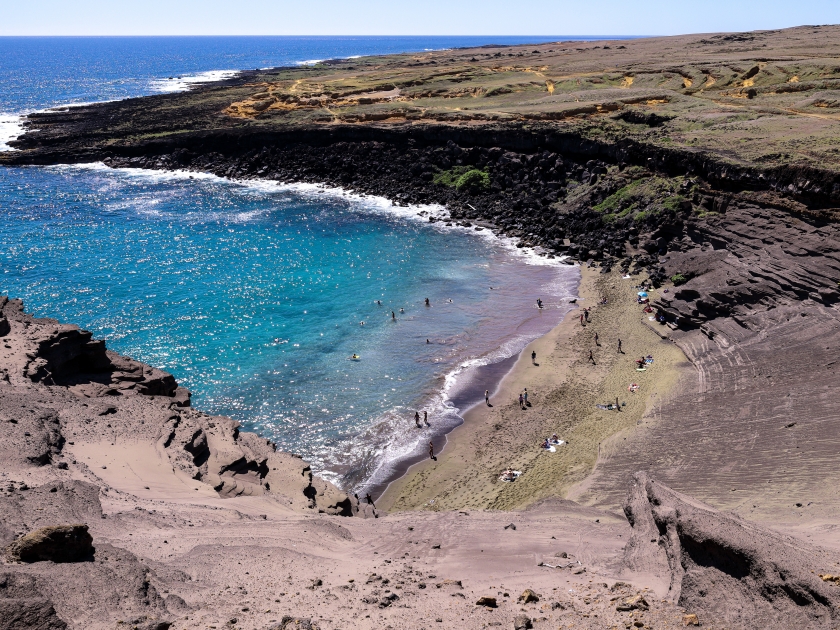
Mahana Beach is an ideal spot for a picturesque picnic. Visitors can spread out their blankets on the green sand and enjoy a meal with panoramic views of the Pacific Ocean. The unique setting provides a serene atmosphere for families, couples, and friends to share food and create memories amidst the beauty of nature.
Exploring Local Landmarks
Just a short drive from Mahana Beach, visitors can explore significant local landmarks. From the majestic Mauna Loa volcano to sacred Hawaiian heiaus (temples), the area around Mahana Beach is dotted with sites that offer insight into the island’s geological and cultural history.
Visiting Nature Reserves
The surrounding area is home to several nature reserves where visitors can witness Hawaii’s diverse ecosystems. These protected areas showcase the island’s flora and fauna, offering opportunities for bird watching, photography, and immersing oneself in the tranquility of nature.
Guided Tours
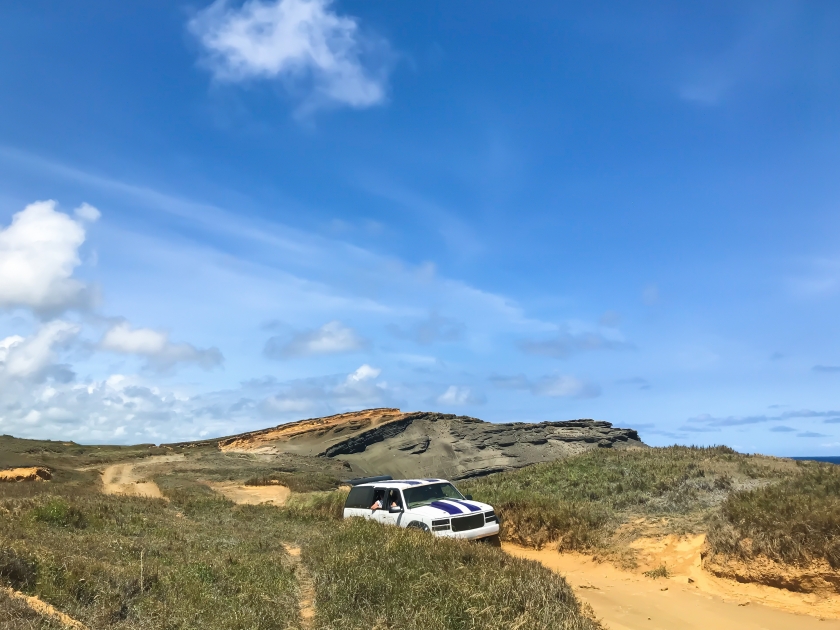
To fully experience the magic of Mahana Beach and its surroundings, guided tours are available. Recommended operators provide expert knowledge of the area’s history, geology, and ecology, enhancing the visit with stories and facts. From eco-tours that focus on conservation efforts to cultural tours diving into Hawaii’s heritage, these guided experiences offer a deeper understanding and appreciation of this unique destination.
Amenities and Facilities
Mahana Beach offers a range of facilities to enhance the visitor experience, including clean and accessible public restrooms, picnic areas with tables for dining amidst nature, and parking, which can be competitive during busy periods, so early arrival is suggested. While lifeguards may not always be on duty, caution is advised when swimming. Accessibility efforts are in place, though the natural landscape may present challenges for some visitors. The beach is also a gateway to recreational opportunities, with marked hiking trails inviting exploration of the area’s natural beauty and strategically placed viewpoints offering stunning vistas of the ocean and the beach’s unique green sands.
Tips for Visiting
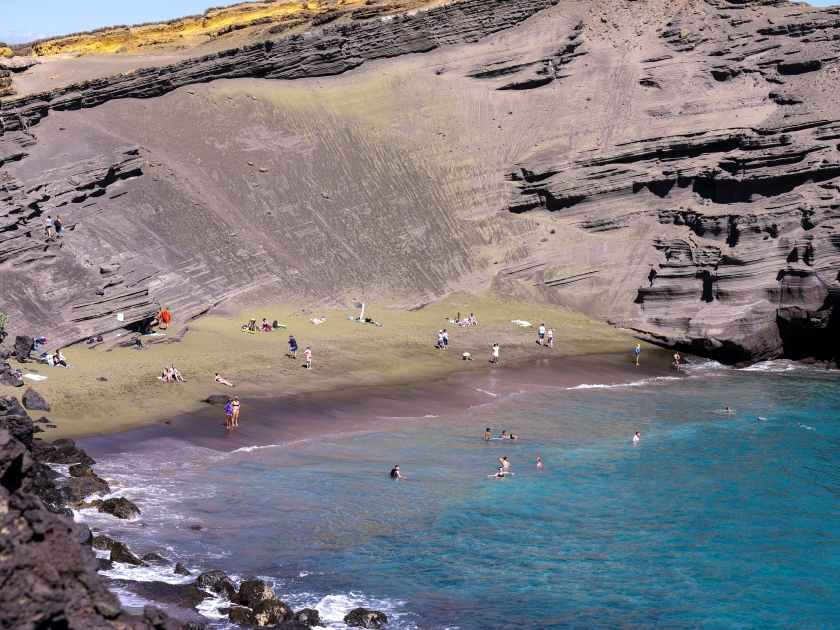
- Use high SPF sunscreen to protect from the strong Hawaiian sun.
- Drink plenty of water to stay hydrated.
- Wear appropriate footwear for the beach and any hiking activities.
- Stay within designated swimming areas to ensure safety
- Follow all posted signs and warnings about currents and tides
- Keep a safe distance from wildlife and natural formations
- Participate in beach clean-ups if available
- Use eco-friendly products to reduce impact on the environment
- Educate yourself on local conservation efforts and support them when possible
- Do not remove sand or rocks from the beach.
- Avoid stepping on vegetation and respect fenced-off areas.
- Dispose of trash properly in designated bins or take it with you.
Best Time to Visit
Mahana Beach offers a range of facilities to enhance the visitor experience, including clean and accessible public restrooms, picnic areas with tables for dining amidst nature, and parking, which can be competitive during busy periods, so early arrival is suggested. While lifeguards may not always be on duty, caution is advised when swimming. Accessibility efforts are in place, though the natural landscape may present challenges for some visitors. The beach is also a gateway to recreational opportunities, with marked hiking trails inviting exploration of the area’s natural beauty and strategically placed viewpoints offering stunning vistas of the ocean and the beach’s unique green sands.
Frequently Asked Questions (FAQs)
Mahana Beach is renowned for its stunning green sand, one of the only four beaches in the world with this natural phenomenon, making it a unique and must-visit destination for travelers.
Mahana Beach is relatively undeveloped, with no formal facilities such as restrooms, shops, or restaurants. Visitors should plan to bring all necessary supplies, including water, food, and sun protection.
Swimming at Mahana Beach can be safe, but it’s important to be cautious of strong currents and waves. Always check local conditions on the day of your visit and consider swimming only if you’re a confident swimmer.
Taking sand from Mahana Beach is strictly prohibited to preserve its unique natural beauty and ecosystem. Visitors are encouraged to take photos but leave the beach as they found it.
As of my last update, no permit is required to visit Mahana Beach. However, visitors should check the latest regulations or any changes in access requirements before planning their trip.
Pets are not typically allowed at Mahana Beach to protect the area’s natural environment. Service animals may be an exception, but it’s best to verify any specific rules or allowances before visiting.
How to Get There
By Car
To reach Mahana Beach by car from the city center, begin by taking the main highway south towards the coast. After approximately 20 miles, exit onto Route 305 heading west. Continue on Route 305 for about 10 miles until you see signs for Mahana Beach. Turn right onto Beach Access Road, and you’ll find parking available within a few minutes’ drive.
By Bus
If you’re traveling by bus, start from the central bus station and take line 5 towards the southern terminals. Transfer at Station South to line 10B, which is direct to Mahana Beach. The entire bus ride should take around 1 hour and 15 minutes, dropping you off right at the entrance to the beach. Buses run every 30 minutes, starting from early morning until late in the evening, making it a convenient option for travelers without a car.


